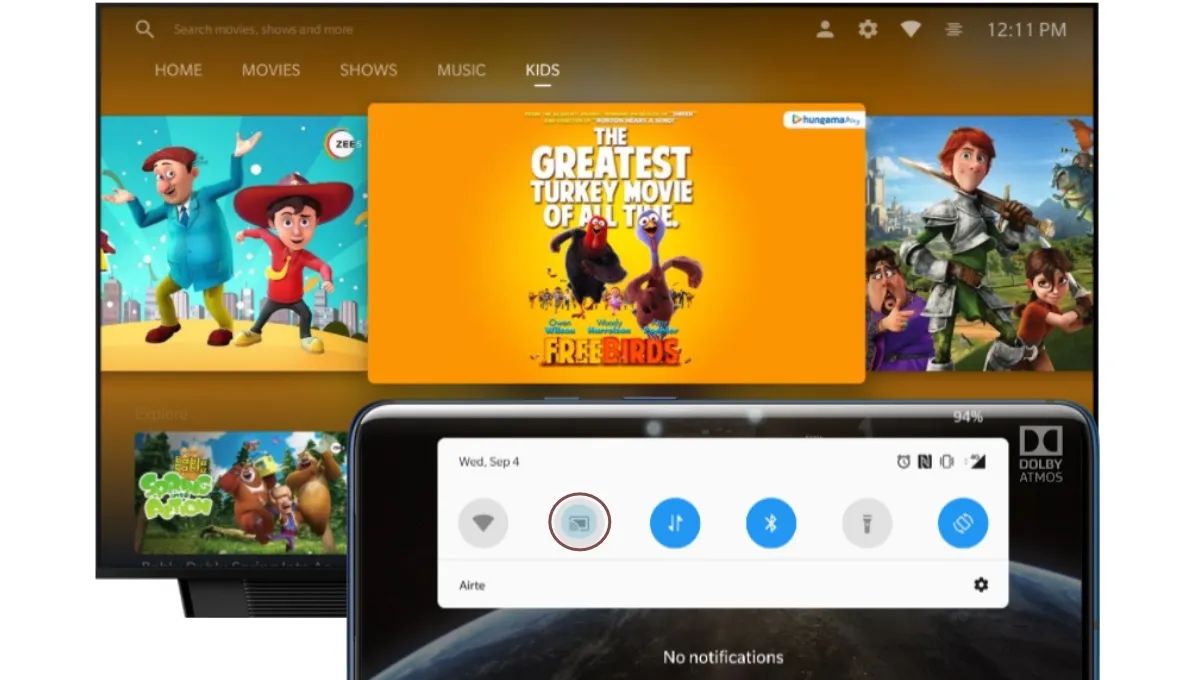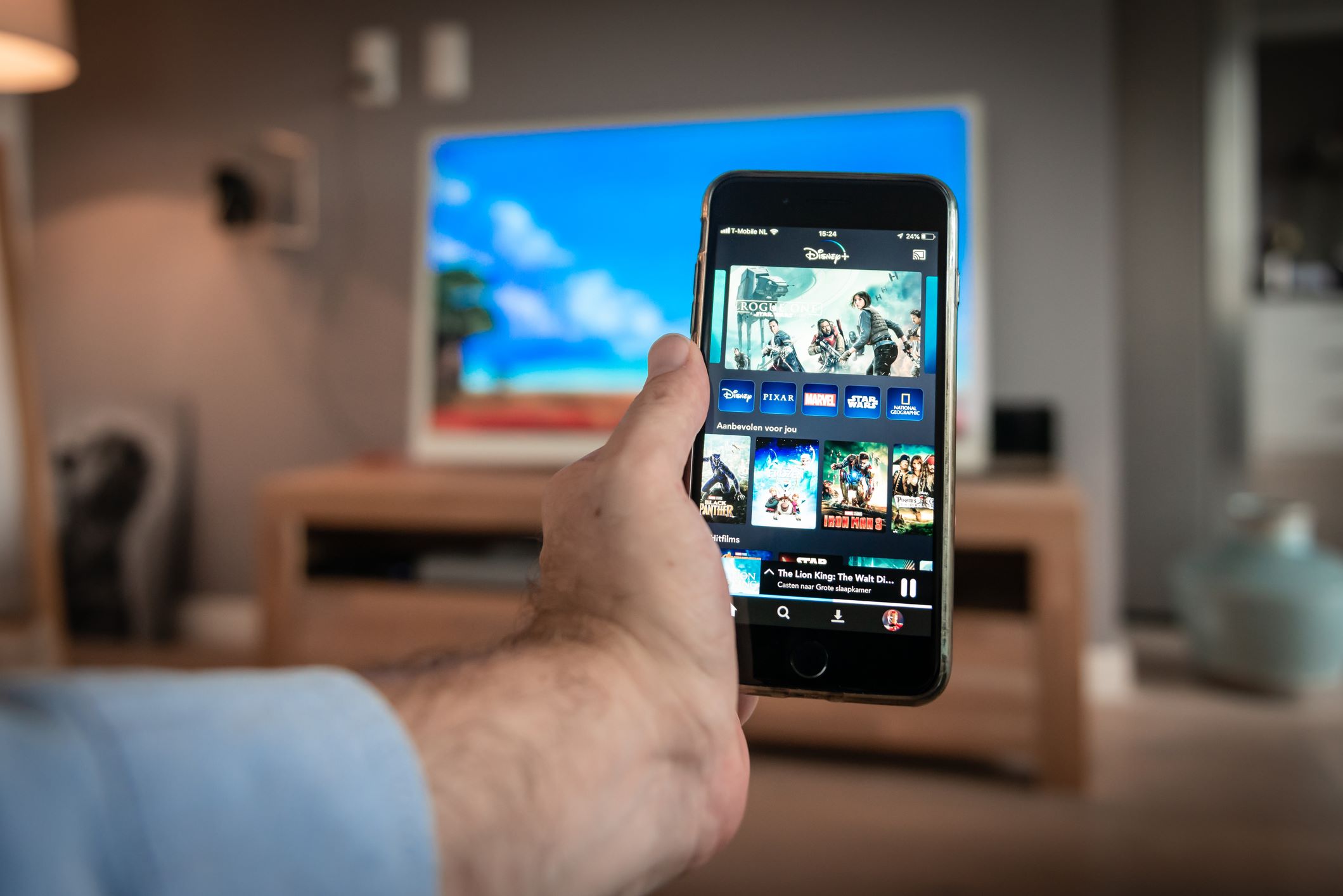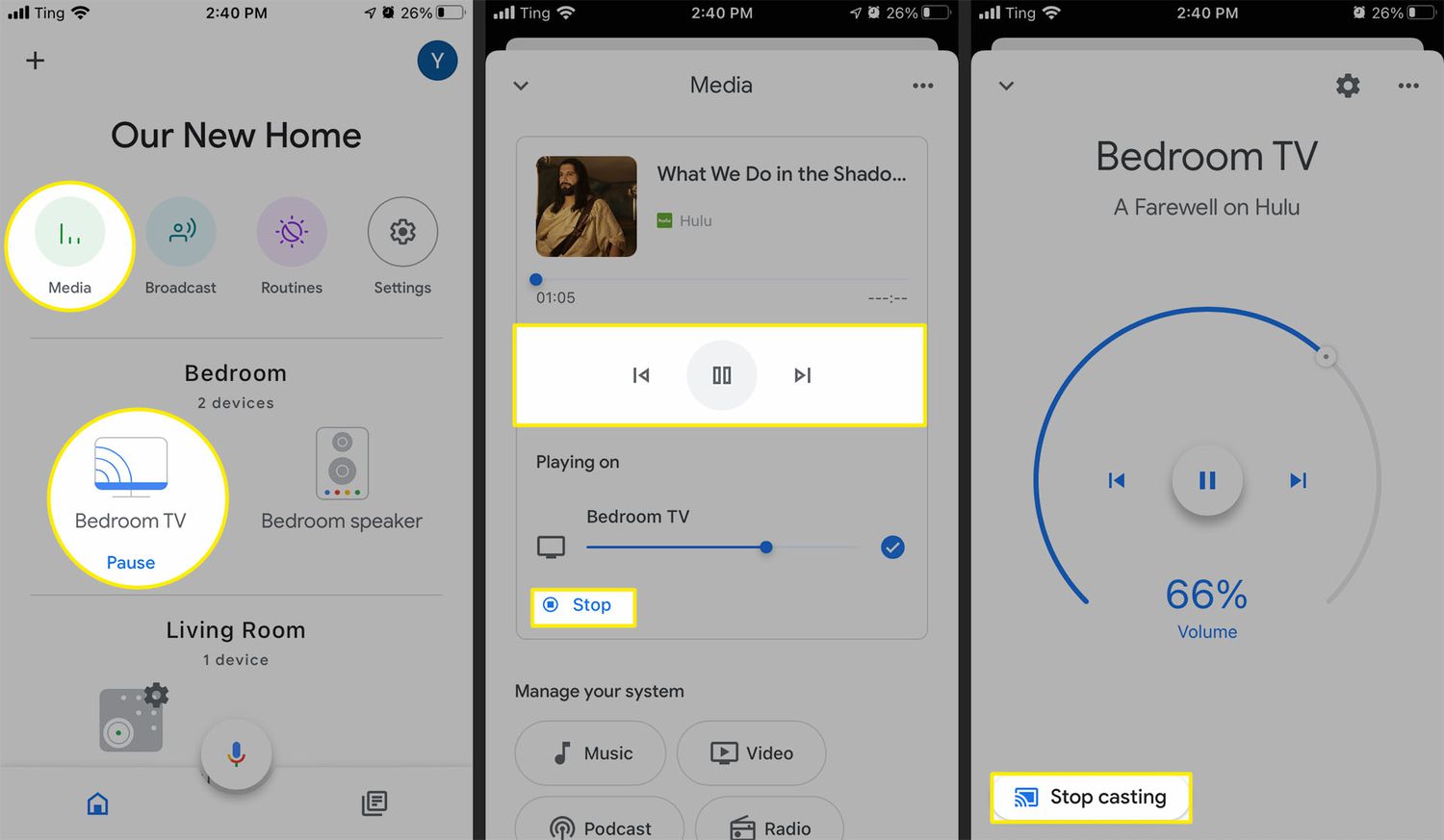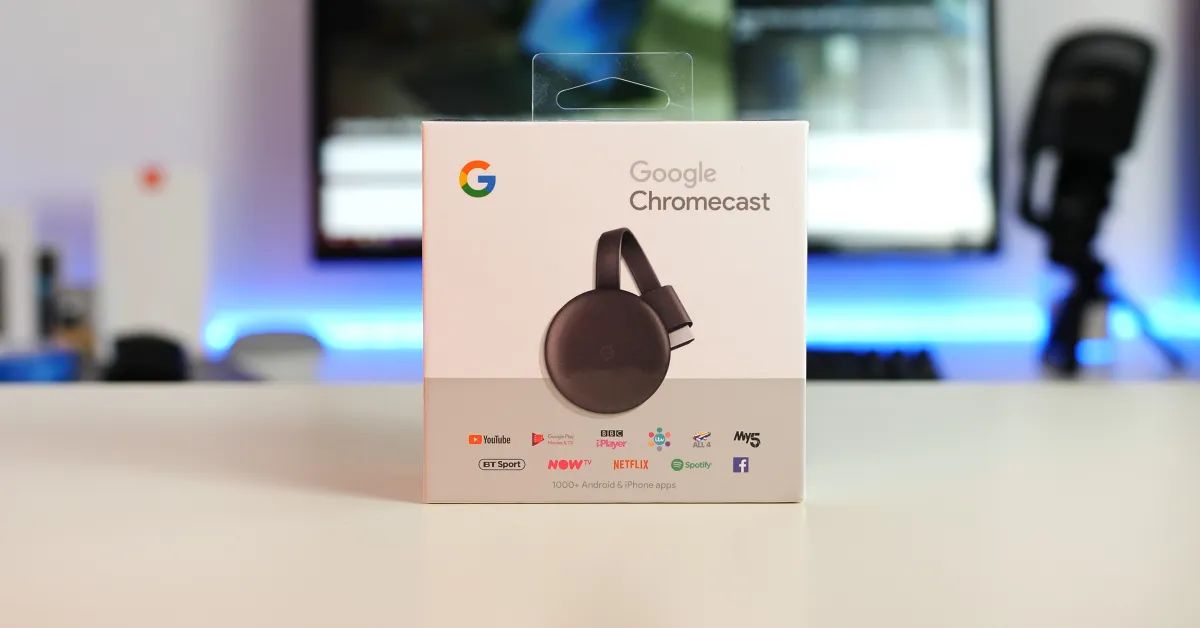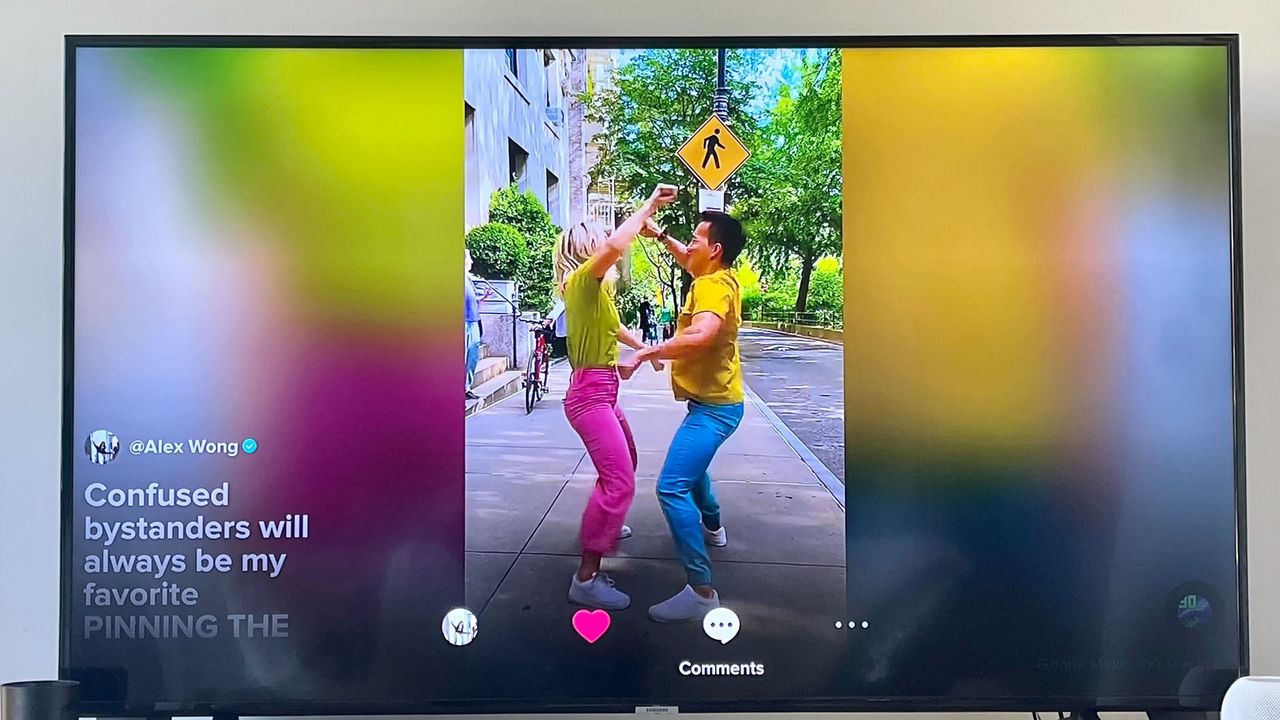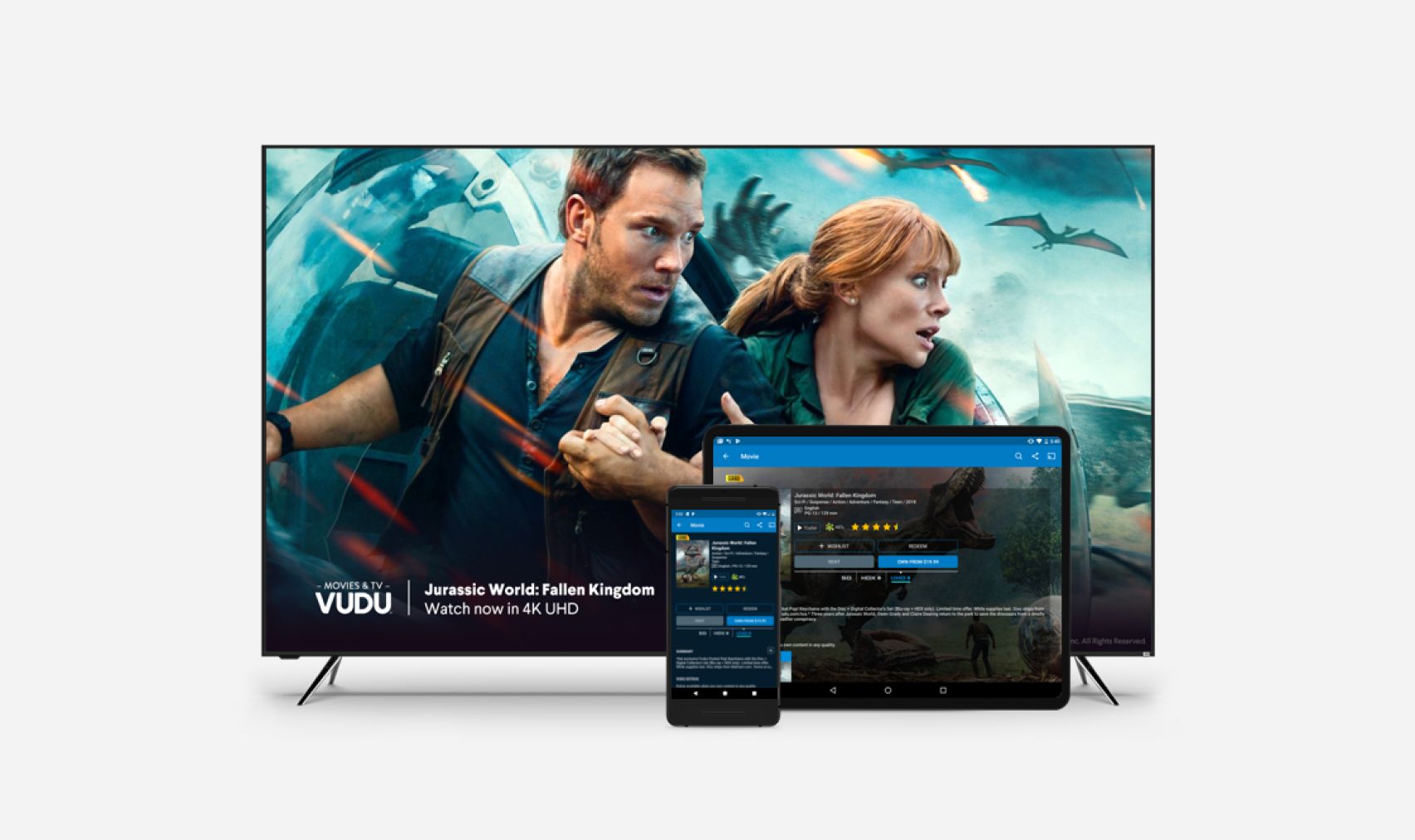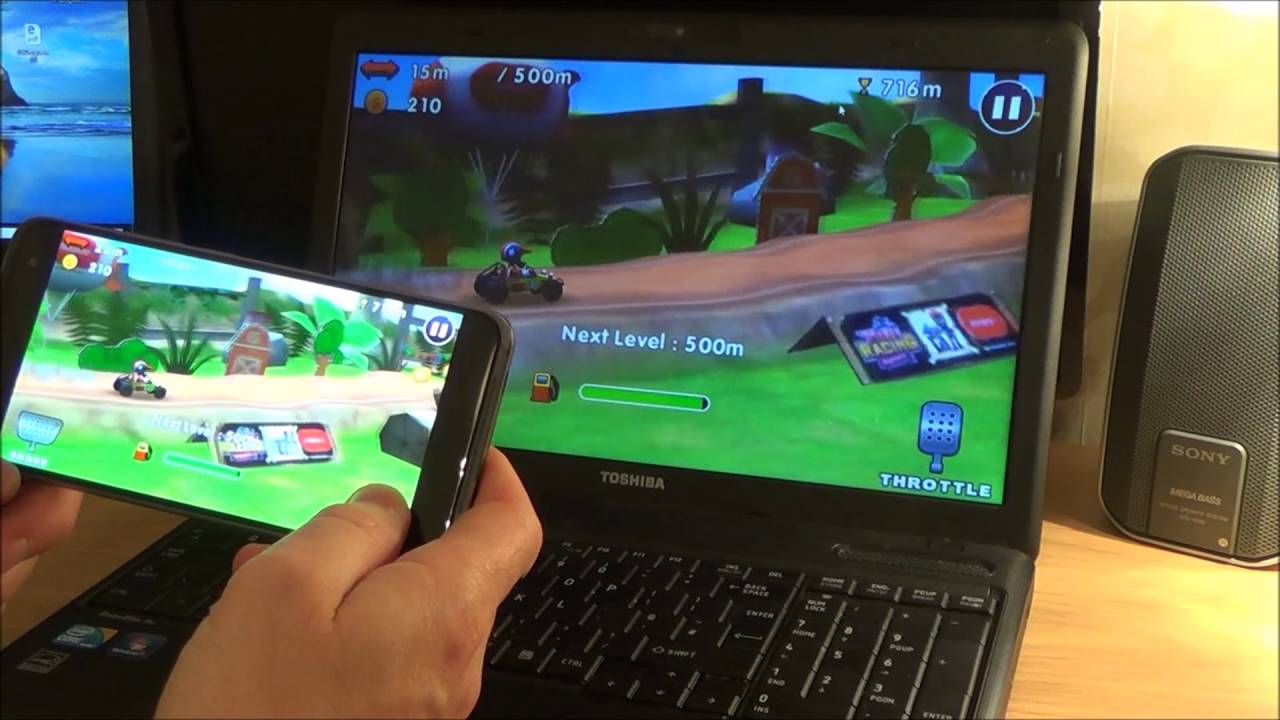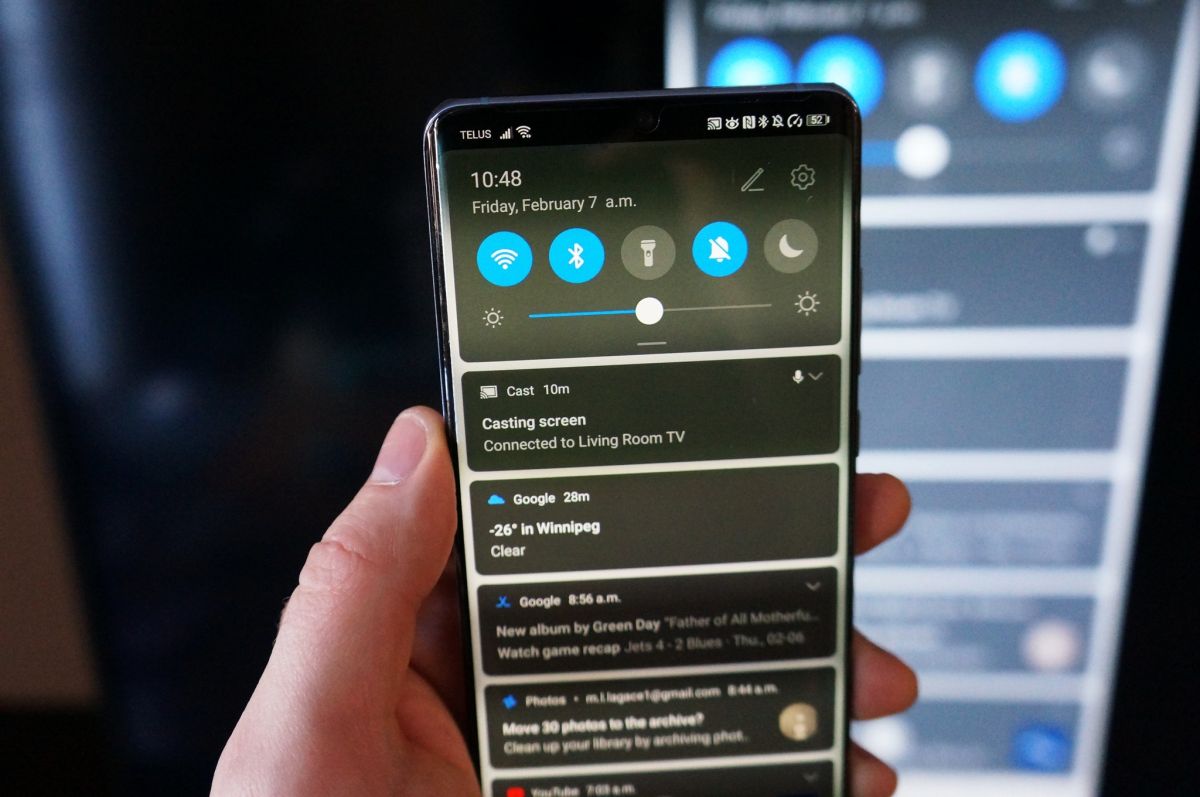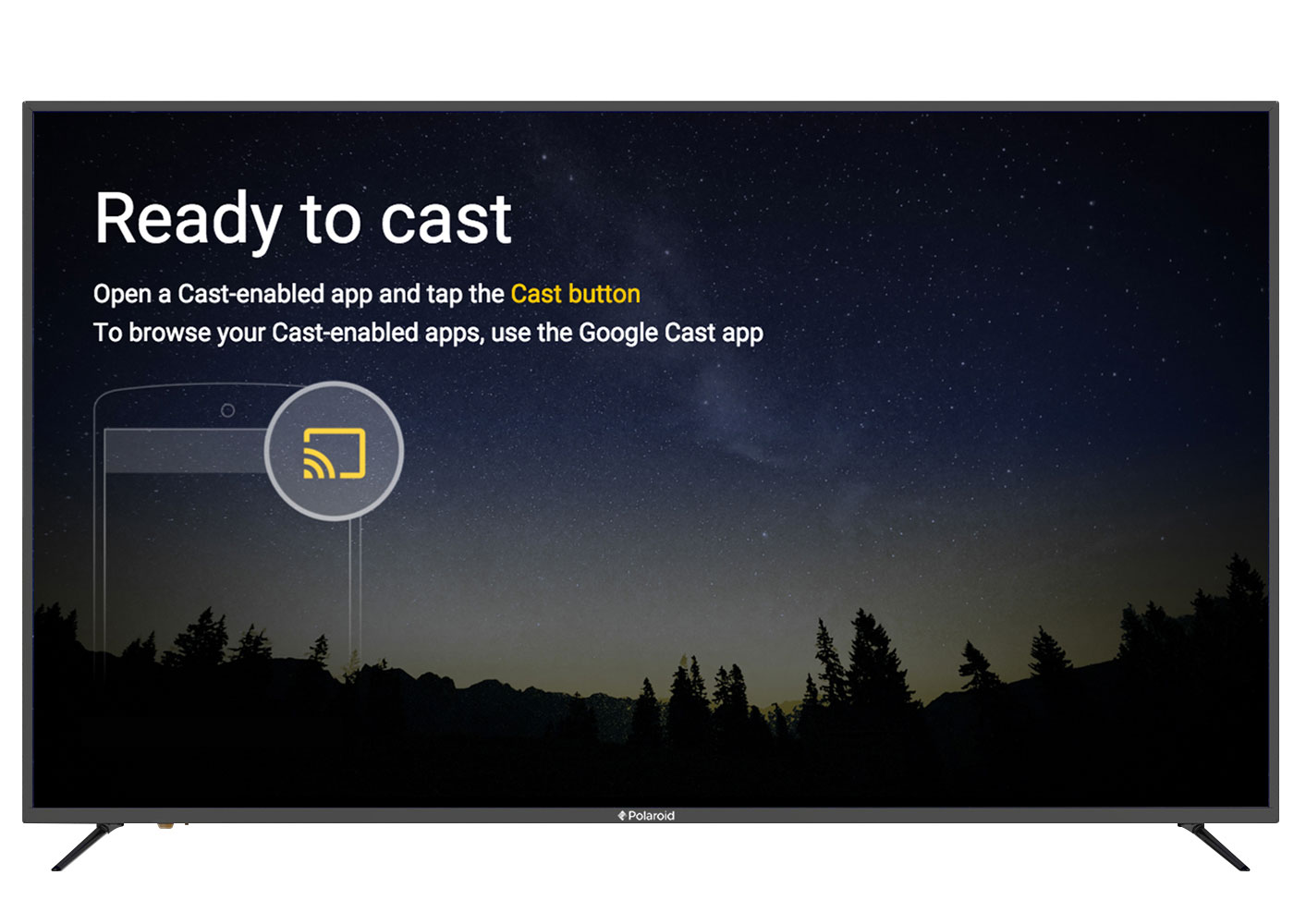Introduction
Welcome to the world of Chromecast, where you can effortlessly cast your phone to your TV and enjoy all your favorite content on the big screen. It’s an exciting feature that allows you to stream videos, photos, and even play games from your phone directly to your television. Say goodbye to squinting at a small screen and embrace a whole new level of entertainment!
Chromecast is a small device that plugs into your TV’s HDMI port and allows you to stream content wirelessly from your phone, tablet, or computer. With Chromecast, you can turn any TV into a smart TV and enjoy a wide variety of streaming services, including Netflix, Hulu, YouTube, and many more.
So how does Chromecast work? It uses a technology called “casting,” where your phone acts as a remote control, sending content directly to your TV. The Chromecast device acts as a receiver, displaying the content on the TV screen. It’s a seamless and convenient way to enjoy your favorite content without the need for cables or additional devices.
If you’re eager to get started with casting your phone to your TV using Chromecast, follow the simple steps outlined below. Before you know it, you’ll be enjoying your favorite movies, TV shows, and videos on the big screen.
Keep in mind that the steps may vary slightly depending on your specific Chromecast model and the type of phone you have. Nonetheless, the basic principles remain the same.
What is Chromecast?
Chromecast is a versatile streaming media player developed by Google. It is a small, dongle-like device that connects to the HDMI port of your TV and allows you to stream content wirelessly from your phone, tablet, or computer.
Unlike traditional smart TVs or set-top boxes, Chromecast is not a standalone device with its own user interface. Instead, it relies on your phone or other devices to control the content and streaming services you want to access. It essentially turns your TV into a receiver, displaying the content sent from your casting device.
Chromecast supports a wide range of apps and streaming platforms, including popular services like Netflix, YouTube, Hulu, Disney+, Spotify, and many others. You can browse and select content from these apps on your phone or tablet, and with a simple tap, cast it onto your TV screen.
One of the most appealing aspects of Chromecast is its simplicity. It’s easy to set up and use, making it accessible for even the least tech-savvy individuals. Additionally, since it relies on your phone as the control center, you can continue to use your device for other tasks while your content is casting on the TV.
Another great feature of Chromecast is its compatibility with multiple devices and operating systems. Whether you have an Android phone, an iPhone, an iPad, or a laptop running Windows or macOS, you can cast content to your TV using Chromecast.
With Chromecast, you can not only stream videos and movies but also cast photos, music, and even mirror your entire screen onto the TV. This opens up a world of possibilities for sharing and enjoying content with friends and family.
In summary, Chromecast is a simple yet powerful streaming media player that allows you to transform your regular TV into a smart TV. With its wide compatibility, ease of use, and extensive app support, it has become a popular choice for those who want to elevate their entertainment experience.
How Does Chromecast Work?
Chromecast uses a technology called “casting” to stream content from your phone, tablet, or computer to your TV. Here’s a simplified breakdown of how it works:
- Connectivity: First, you connect the Chromecast device to your TV’s HDMI port. Then, using your home’s Wi-Fi network, the Chromecast establishes a connection between your casting device and the TV.
- Control Center: Your phone or tablet acts as the control center for Chromecast. It allows you to browse and select content from various streaming apps installed on your device.
- Sending the Content: When you find something you want to watch, with a simple tap of the Cast button or the Chromecast icon within the app, your phone sends a signal to the Chromecast device, instructing it what content to display on the TV screen.
- Streaming the Content: Chromecast retrieves the requested content through your Wi-Fi network directly from the internet. It then initiates a direct connection with the streaming service to fetch the video or audio data and starts displaying it on your TV.
- Phone as Remote: While the content is streaming on the TV, your phone or tablet functions as a remote control. You can pause, play, adjust volume, and even browse for more content without interrupting the playback on the TV.
Chromecast works seamlessly with supported apps and services on your casting device. It essentially allows you to “cast” the content from your device to the TV, creating a wireless and convenient way to enjoy your favorite shows, movies, and more on a larger screen.
It’s important to note that Chromecast does not directly access or store content. It acts as a bridge between your casting device and the streaming services, retrieving and displaying the content you choose to cast.
Overall, the simplicity and effectiveness of Chromecast’s casting technology have made it a popular choice for those looking to enhance their TV viewing experience without the need for complex setups or additional cables.
Steps to Set Up Chromecast for Casting Phone to TV
Setting up Chromecast to cast your phone to your TV is a straightforward process. Follow these steps to get started:
- Step 1: Connect Chromecast to Your TV: Plug the Chromecast device into an available HDMI port on your TV. If your TV doesn’t have an HDMI port, you may need an HDMI to AV adapter. Ensure that the Chromecast is securely connected.
- Step 2: Set up Chromecast Using the Google Home App: On your casting device, download and install the Google Home app from the App Store (for iOS) or Google Play Store (for Android). Open the app and sign in to your Google account. Follow the on-screen instructions to set up your Chromecast by selecting your device and connecting it to your home Wi-Fi network.
- Step 3: Connect Your Phone to Chromecast: Once the Chromecast is set up, ensure that your phone and Chromecast are connected to the same Wi-Fi network. Open a compatible streaming app, such as YouTube or Netflix, on your phone.
- Step 4: Cast Phone to TV Using Chromecast: Look for the Cast button or Chromecast icon within the app and tap on it. A list of available Chromecast devices will appear. Select your Chromecast device from the list, and the content will start casting to your TV. The playback controls will appear on your phone or tablet, allowing you to control the playback on the TV.
That’s it! You have successfully set up your Chromecast and cast your phone to your TV. You can now enjoy a wide range of content right on your television screen.
It’s worth mentioning that the steps may slightly vary depending on your specific Chromecast model and the type of phone or casting device you are using. However, the general process remains the same.
If you encounter any issues during the setup process, refer to the user manual or the Chromecast support website for troubleshooting assistance. Make sure your devices are updated with the latest firmware and app versions for optimal performance.
Now that you know how to set up Chromecast for casting your phone to your TV, it’s time to sit back, relax, and enjoy your favorite videos, movies, and more on the big screen!
Step 1: Connect Chromecast to Your TV
The first step in setting up Chromecast to cast your phone to your TV is to physically connect the Chromecast device to your TV. Here’s how you can do it:
- Locate an HDMI Port: Identify an available HDMI port on your TV. It’s usually located on the back or side panel of the TV. Ensure that there’s enough space around the HDMI port to plug in the Chromecast device.
- Plug in the Chromecast: Take the Chromecast device and insert it into the HDMI port you identified in the previous step. Gently push it in until it’s fully inserted.
- Power the Chromecast: The Chromecast device requires power to function. Connect the micro USB cable that came with the Chromecast into the port on the device. Depending on your TV, you can either plug the other end of the USB cable into a USB port on your TV or use a power adapter to connect it to a power outlet.
- Select the Input Source: Turn on your TV and use the remote control to select the appropriate HDMI input source where you plugged in the Chromecast device. Most TVs have multiple HDMI ports, so be sure to select the correct one where you connected the Chromecast.
That’s it! Your Chromecast is now physically connected to your TV. The next steps will guide you on setting up the Chromecast device using the Google Home app on your casting device.
Keep in mind that the appearance and layout of the HDMI ports may vary depending on your TV model. Refer to your TV user manual if you’re having trouble locating the HDMI ports or connecting the Chromecast device.
Now that your Chromecast is securely connected to your TV, proceed to the next step to continue the setup process and start casting your phone to your TV.
Step 2: Set up Chromecast Using the Google Home App
After connecting your Chromecast device to your TV, the next step is to set it up using the Google Home app. This app will guide you through the process of connecting your Chromecast to your home Wi-Fi network. Follow these steps:
- Download and Install the Google Home App: Open the App Store (for iOS devices) or Google Play Store (for Android devices) on your casting device. Search for “Google Home” and download the app. Once downloaded, open the app.
- Sign in to Your Google Account: If you already have a Google account, sign in using your credentials. If you don’t have one, you’ll need to create a Google account to proceed with the setup.
- Tap on the “+” Icon: In the Google Home app, tap on the “+” icon located at the top-left corner of the screen. You’ll be presented with a list of options; select “Set up device” and then choose “New devices” to begin the setup process.
- Select Your Chromecast Device: The Google Home app will automatically detect Chromecast devices on your Wi-Fi network. Look for your Chromecast device in the list and tap on it to continue.
- Confirm Connection: The app will display a code on both your casting device and the TV screen. Make sure they match. If they do, tap “Yes” to continue.
- Choose Your Wi-Fi Network: The app will then prompt you to choose your home Wi-Fi network. Select your network from the list and enter the Wi-Fi password if required. Allow the app a moment to connect the Chromecast to your Wi-Fi network.
- Customize Device Settings (Optional): The app may provide options to customize the name of your Chromecast device or enable guest mode. You can choose to make these changes or proceed with the default settings.
- Finish Setup: Once the connection is established and the settings are saved, the app will notify you that your Chromecast is ready to use. You can now move on to the next step of connecting your phone to Chromecast.
By completing these steps, you have successfully set up your Chromecast using the Google Home app. The app will serve as the control center for managing your Chromecast settings and casting content from your phone to your TV.
Now that the initial setup is complete, follow the next steps to connect your phone to your Chromecast and start casting your favorite content.
Step 3: Connect Your Phone to Chromecast
Now that you have set up your Chromecast device using the Google Home app, the next step is to connect your phone or casting device to the Chromecast. Follow these steps to establish the connection:
- Ensure the Devices are on the Same Wi-Fi Network: Double-check that your phone or casting device and your Chromecast device are connected to the same Wi-Fi network. This is crucial for the devices to communicate with each other.
- Open a Compatible Streaming App: On your phone or casting device, open a compatible streaming app that supports Chromecast. Popular examples include YouTube, Netflix, Hulu, Disney+, Spotify, and many more. Make sure the app is installed and up to date.
- Look for the Cast Button: Within the streaming app, look for the Cast button. It is usually located at the top-right corner of the app or within the playback controls. The Cast button is represented by a square with three curved lines in the corner (a Wi-Fi-like symbol).
- Tap the Cast Button: Tap the Cast button, and a list of available devices will appear on your screen. Look for your Chromecast device in the list. It may be named based on the custom name you set during setup or shown as the default name “Chromecast”.
- Select Your Chromecast Device: Tap on your Chromecast device in the list to establish the connection. The app will indicate that it is connecting to your Chromecast.
- Confirmation: Once the connection is established, you’ll see a notification on your TV screen indicating that your phone is connected and ready to cast. At the same time, your phone or casting device will display a confirmation message confirming that it is connected to your Chromecast device.
That’s it! Your phone is now connected to your Chromecast. You are ready to cast your favorite videos, movies, music, or even mirror your phone’s screen onto the TV for a larger viewing experience.
Remember, the specific steps to find the Cast button and connect to Chromecast may vary slightly depending on the streaming app you are using. Refer to the app’s settings or help section if you’re having trouble locating the Cast button.
Now that your phone is connected to Chromecast, proceed to the final step to start casting content to your TV and enjoy a whole new level of entertainment.
Step 4: Cast Phone to TV Using Chromecast
With your phone connected to Chromecast, it’s time to cast your favorite content from your phone to your TV. Here are the steps to cast your phone to your TV using Chromecast:
- Open a Supported App: Launch a compatible streaming app on your phone that supports Chromecast. This can be YouTube, Netflix, Hulu, Disney+, Spotify, or any other app that has the Cast functionality.
- Select Content: Browse through the app and select the video, movie, or music you want to cast to your TV. You can also choose to mirror your phone’s screen if you want to display other apps or content on your TV.
- Tap the Cast Button: Look for the Cast button in the app, usually located at the top-right corner or within the playback controls. Tap the Cast button to initiate the casting process.
- Select Your Chromecast Device: A list of available devices will appear on your phone screen. Select your Chromecast device from the list. The app will establish the connection and start casting the content to your TV.
- Control Playback: Once the content is casting on your TV, you can use your phone as a remote control. The playback controls will be displayed on your phone screen, allowing you to pause, play, adjust volume, or skip to the next track.
- Cast Additional Content: If you want to cast more content from the same app or another compatible app, simply navigate to the desired content and tap the Cast button again. The new content will replace the previous one on your TV.
- End Casting: When you’re done casting, you can tap the Cast button again and select the option to stop casting. Alternatively, you can simply close the app or switch to a different app on your phone, and the casting will automatically stop.
That’s it! You have successfully cast your phone to your TV using Chromecast. Enjoy watching your favorite content on the big screen and take full advantage of Chromecast’s wireless streaming capabilities.
Remember, the availability and functionality of the Cast button may vary slightly depending on the app you are using. If you’re having trouble finding the Cast button or experiencing any issues during the casting process, refer to the app’s help section or support resources.
Now that you know how to cast your phone to your TV using Chromecast, explore a world of entertainment possibilities right from the comfort of your couch.
Additional Tips and Troubleshooting
While Chromecast is designed to be a user-friendly device, you may encounter some issues or have questions along the way. Here are some additional tips and troubleshooting steps to help you get the most out of your Chromecast experience:
- Optimal Wi-Fi Connection: To ensure smooth streaming, make sure your Chromecast device and casting device are connected to a stable and high-speed Wi-Fi network. If you’re experiencing buffering or playback issues, try bringing your casting device closer to the Wi-Fi router.
- Restarting Chromecast: If you encounter any issues or your Chromecast seems unresponsive, try restarting the device. You can do this by unplugging the Chromecast from your TV and then plugging it back in after a few seconds. Also, consider restarting your casting device and router for good measure.
- Updating Firmware and Apps: Keep your Chromecast device, casting device, and streaming apps updated with the latest firmware and app versions. Updates often include bug fixes, performance improvements, and new features.
- Compatible Streaming Apps: Not all apps support Chromecast casting. Check the app’s documentation or website to confirm if it offers Chromecast compatibility. If an app doesn’t support casting, you won’t see the Cast button within the app.
- Chromecast Audio Grouping: If you have multiple Chromecast Audio devices, you can create speaker groups to synchronize audio playback across different rooms. This is especially useful for whole-home audio experiences.
- Privacy and Guest Mode: If you have concerns about privacy, you can enable Guest Mode on your Chromecast to allow guests to cast content without being connected to your Wi-Fi network. Alternatively, you can disable the Guest Mode for added security.
- Streaming Quality: Some streaming apps allow you to adjust the streaming quality. If you’re experiencing buffering or playback issues, try reducing the streaming quality to ensure a smoother streaming experience.
If you’re still experiencing difficulties or have specific questions about your Chromecast setup, refer to the official Chromecast help and support resources. The Chromecast Help Center and online forums are great places to find troubleshooting guides, FAQs, and community discussions.
With these additional tips and troubleshooting steps, you can overcome common challenges and enjoy uninterrupted casting from your phone to your TV using Chromecast.
Conclusion
Casting your phone to your TV using Chromecast opens up a world of possibilities for entertainment and convenience. With just a few simple steps, you can enjoy your favorite movies, videos, music, and more on the big screen in the comfort of your own home.
Chromecast’s seamless and wireless streaming capabilities make it a popular choice for turning any TV into a smart TV. With its wide compatibility across devices and streaming apps, you have the flexibility to choose from a vast range of content options.
We started by explaining what Chromecast is and how it works, highlighting its simplicity and ability to transform your TV viewing experience. We then walked you through the step-by-step process of setting up Chromecast, connecting your phone, and casting content to your TV.
In addition, we provided some helpful tips and troubleshooting suggestions to enhance your Chromecast experience and address any potential issues you may encounter along the way.
As you explore the world of Chromecast, don’t forget to check for firmware and app updates regularly to ensure optimal performance and access to new features.
Now that you’re equipped with the knowledge to set up and use Chromecast, it’s time to sit back, relax, and enjoy the magic of casting your phone to your TV. Grab some popcorn, gather your friends or family, and immerse yourself in the world of entertainment that Chromecast offers.
So go ahead, start casting, and indulge in a truly captivating and immersive viewing experience!







